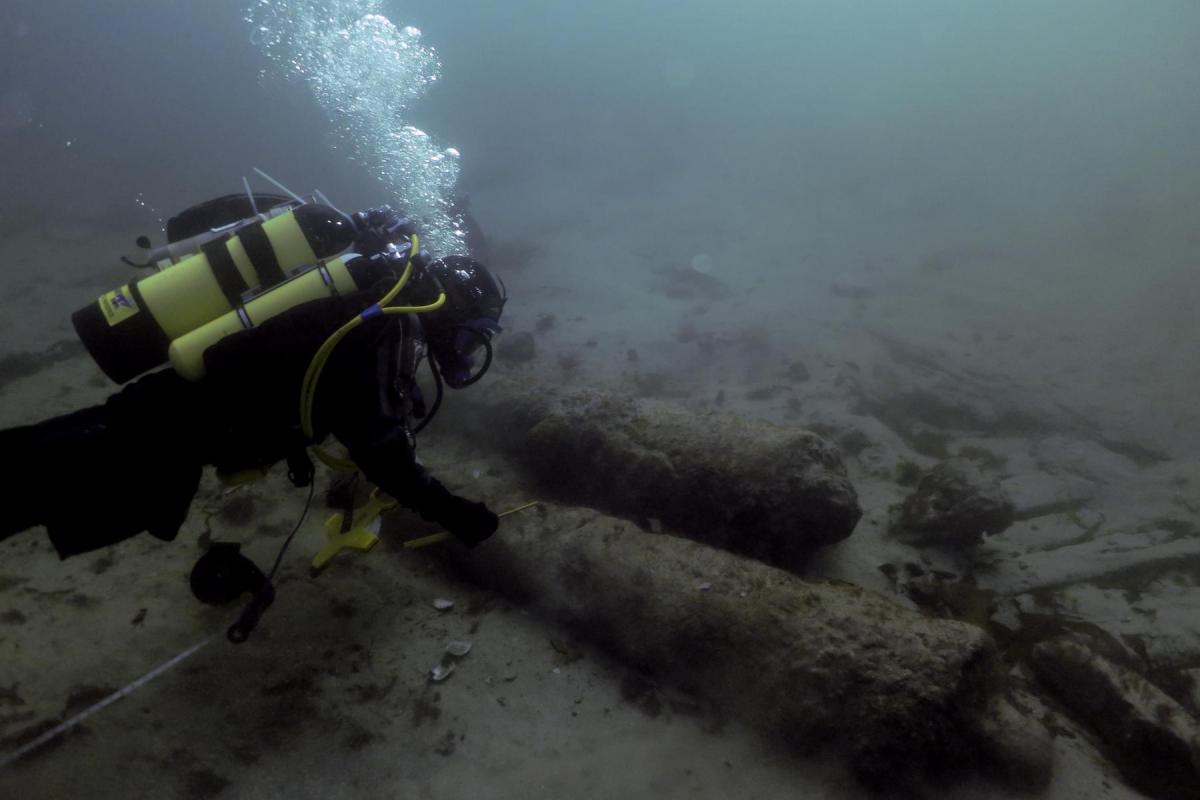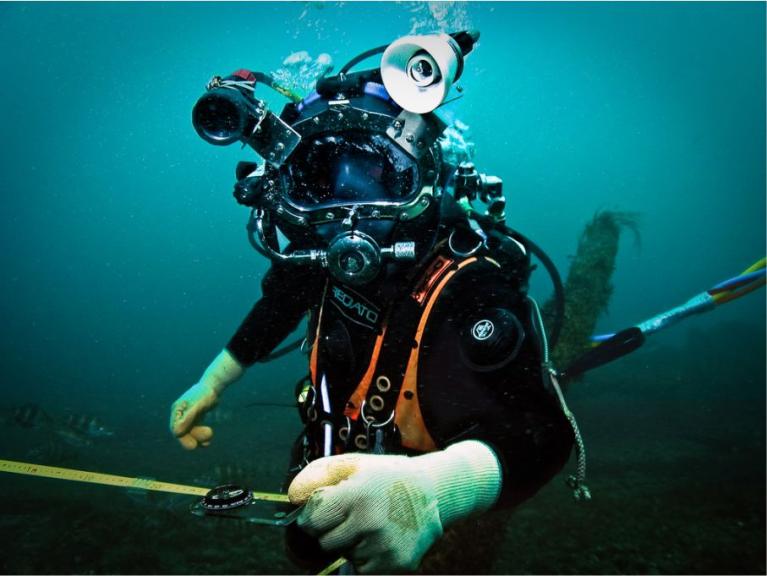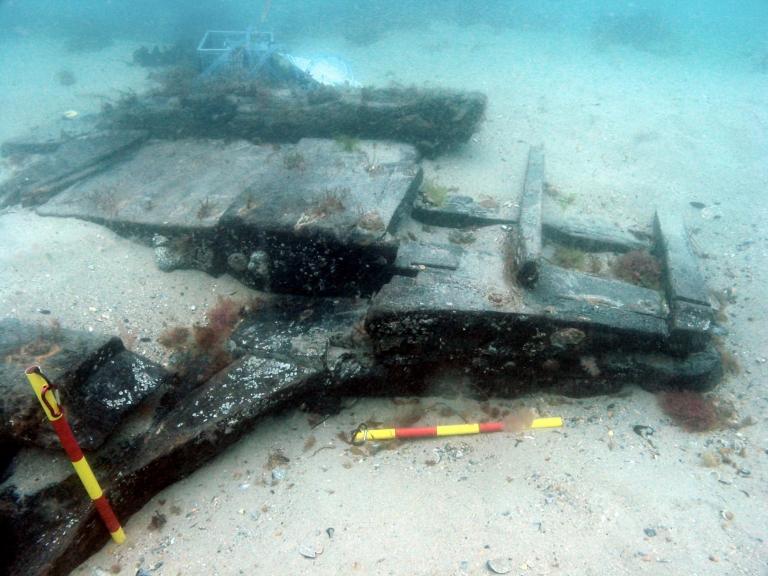In 2012 Historic Scotland commissioned WA Coastal & Marine to survey a historic shipwreck near Drumbeg in the north-west Scottish Highlands. The wreck was found by local divers Ewen Mackay and Michael Errington while scallop diving close to the village of Drumbeg.
WA Coastal & Marine were commissioned to survey the site and found that it consisted of three heavily encrusted cannons with evidence of a preserved wooden hull beneath them. A number of artefacts have also been recovered from the site including cannonballs, galley bricks, a wooden rigging block and a delft tile decorated with an image of a sailing ship. The exact date and origin of the ship is still unknown but the evidence points to a 17th / 18th century date.


On the 18th March 2013 Fiona Hyslop, Cabinet Secretary for Culture and External Affairs announced that the wreck has been designated as the first of Scotland's Historic Marine Protected Areas. This designation recognises that the wreck is a historic asset of national importance. The designation of the wreck at Drumbeg lasts only for a period of two years, during which time a consultation will invite views on proposals to make the designation permanent.
One of the most exciting aspects of the project was the chance to apply our expertise in multi-image photogrammetric recording in a marine environment. Digital photographic recording of the wreck site was undertaken as part of a single dive, taking around 20 minutes altogether. This data was processed on our dedicated geomatics workstations over several days. We used the resulting high-quality 3D models to enhance our site plans and also to create animated reconstructions of what the cannons and anchor would have originally looked like.



